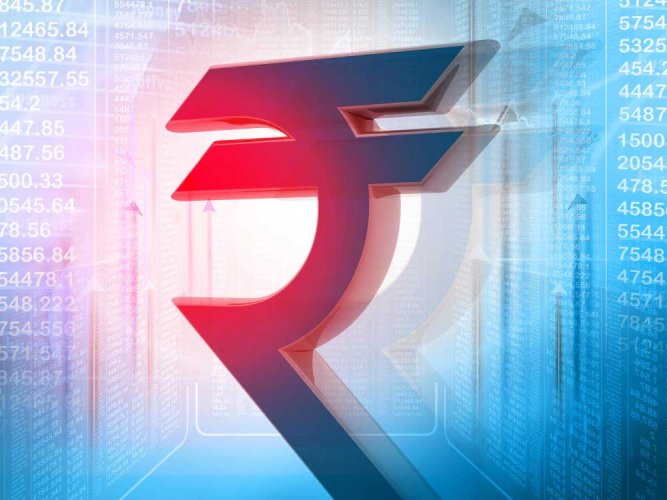Waqas Shabbir |
The depreciation of the rupee has led to a debate throughout the country. Though, the bulk of the commentators believe it to be a much needed and correct tool to lift the exports somehow to help bridge the gap between the growing twin deficit. However, some remain skeptical of this forced move under pressure from the IMF.
Pakistan must give in the demand of the organization to expose itself to less heat over the fiscal indiscipline and failure to implement structural reforms.
Can the depreciating rupee generate enough exports to counter the growing debt to save battering in the next polls? It looks like the government is in position to ensure smooth sailing with no IMF-bail out until the next polls.
Pakistan continues to deal miserably with acute and chronic public entities that suck cash out of the system. Circular debt crises in the Power sector are yet to deal with it, which creates significant hurdles for smoothing functioning of the finances.
The incumbent government of PML-N is in a fix as it confronts a challenging situation. Any further mismanagement could run ruins into good work of the state. Though in comparison with the Zardari led PPP government, PML-N has performed marginally better. But, it’s hard to comprehend and acknowledge the exact motives behind its extraordinary steps to develop through the debt-ridden path.
Read more: Can depreciating rupee generate enough exports to counter growing debt and…
After Musharraf’s era, democratic governments earned a license to go on an unprecedented spending spree to overturn the discredited work of a dictatorship. After 2008 experienced democratic regimes of Nawaz and Zardari, Pakistan has accumulated a staggering amount of debt. It is more than half of the debt piled up since independence.
Secondly, under pressure from the sudden rise of Imran Khan, PML-N has been pressed hard to showcase good governance and infrastructure development to convince the public of its credentials. Imran Khan has attacked the government aggressively and exposed the shortfalls through the continuous rhetoric on inefficiencies of government.
Pakistan may not be in a position to have enough resources, which could be allocated for infrastructure and inclusive development.
The emergence of media and a party [PTI] which could wholeheartedly questions every move of the state has pushed the rulers to show some fancy work which may have prompted to debt-ridden development with not enough funds available.
Nawaz’s apparently egoistic antics coupled with a narcissistic approach to present himself as an ideology and initially denying the capable younger Sharif to takeover and the barrage of comments against the judiciary post ousting can be the most significant contributor to his undoing in the next general elections.
Despite, the debt-driven growth initiative, IMF had witnessed encouraging signs. The macroeconomic indicators reflected efforts to get the economy out of this quagmire. But, lack of fiscal discipline and failure to transform export sector in the wake of inefficient agricultural performance led to the swelling of trade deficits.
Read more: Shunning IMF for Sukkuk is politics at play
Depleting reserves and expected interest payments coupled with principal payments and CPEC related payments would put the government in jeopardy in the near future.
But, for now, cashing on CPEC and growing reputation of Pakistan as an investment hub boosted the confidence of international investors. Secondly, Pakistan Stock Exchange (PSE) may have seen red in recent weeks or so, but it encouraged foreign investors in the last year or so and is termed as one of the most rewarding and attractive markets for investors in Asia.
PML-N has performed marginally better. But, it’s hard to comprehend and acknowledge the exact motives behind its extraordinary steps to develop through the debt-ridden path.
In the context of these realities, despite the fact that thus far no one is aware of the details of long-term CPEC, and release of 26-page report fails to highlight and explain the actual exposure and position of China and its private firms in different sectors of Pakistan.
Pakistan’s failure to drive growth and development with borrowed funds internally and externally has failed to improve the conditions of the country and its masses. Because, failure to implement structural reforms, and lack of competitiveness, energy crises, and continuous political instability augmented the problems.
Encouraged by IMF’s positive response, Pakistan has decided to continue its borrowing spree. After issuing bonds twice in quick succession, the government is planning to raise more funds shortly, which apparently looks like a political decision to avert IMF for now to avoid public pressure for the time being.
Read more: Pakistan’s economy at a tipping point
Meanwhile, the depreciating rupee may not be able to generate enough revenue via exports to pay off the bulging twin deficit and increasing debt and liabilities. Pakistan may not be in a position to have enough resources, which could be allocated for infrastructure and inclusive development.
Moreover, due to widespread corruption and underutilization of loans on asset building, it may not be able to improve the financial perils for Pakistan. Can the depreciating rupee generate enough exports to counter the growing debt to save battering in the next polls? It looks like the government is in position to ensure smooth sailing with no IMF-bail out until the next polls.
Waqas Shabbir is a graduate in Finance from the Derby Business School graduate, currently working as a Research-Analyst at GVS. The views expressed are those of the author and do not necessarily reflect GVS editorial policy.














